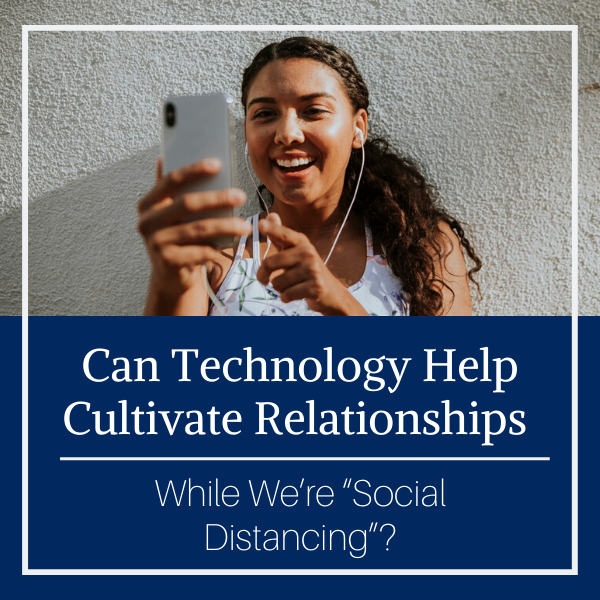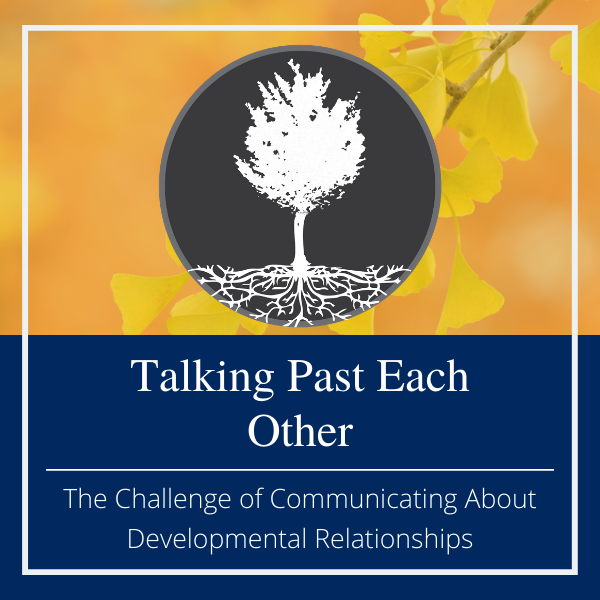Blog
Can Technology Help Cultivate Relationships While We’re “Social Distancing”?
By Eugene C. Roehlkepartain, Vice President, Research and Development, Search Institute
This week, a Pew Research Center survey showed that 70% of American adults see the coronavirus as a major threat to the economy, and 47% see it as a major threat to the U.S. population’s health. Data were collected March 14-16.
A week earlier, Search Institute had asked educators and youth workers on our mailing list (not a representative sample) how they were preparing for the coronavirus. And at that time (March 9-11), only about half of the 1,022 respondents said they were quite or very concerned. And only 25% had actually made any changes, with 22% having plans in place if needed.
What a difference a week makes!
Across the United States and around the world, we are “sheltering in place,” learning how to do “social distancing,” and struggling with adjusting to changes or uncertainty in employment and juggling the responsibilities of caring for kids who are out of school at the same time. When we get beyond the technical, logistical, and financial challenges, we’re faced with another conundrum: How to cultivate developmental relationships when we can’t connect in person? We know we can learn and communicate virtually. But can we really nurture relationships virtually?

“Tell us what you learn”
The responses from the educators and youth workers who responded to Search Institute’s survey* likely reflect the many different ways people think about technology and relationships. Many said, simply: “[We have] no experience with this at all.” “This is a first.” “This is all new!” “We’re still figuring this out.” Others are steeped in distance learning, tele-counseling, e-mentoring, and other technology-mediated roles, and they are more optimistic, even with some important challenges to address. It is clear from the survey responses that many technology tools are available and being used (see Figure 1 below). Yet two important questions remain:
- Are practitioners, young people, and their families across the diversity of needs and capabilities aware of the available tools? Do they have access to technology and the abilities to use them effectively?
- Can these tools effectively enable people to nurture developmental relationships with and among young people from all backgrounds and in all situations, and not just facilitate learning or communication?
Technology policies, access, capacity, and capabilities
For some respondents to our survey, using technology for work with youth is obvious—just expanding what they already do using the platforms they already use. The only difference they see is that what used to be supplementary will now become their primary tool. Within this sample, prevention specialists and educators were most likely to say they planned to use more technology (72% and 65%, respectively), while out-of-school programs (46%) and government programs (44%) were least likely to say they would use more technology to replace in-person programming when they completed our poll during the early days of the COVID-19 crisis.
If respondents told us they were going to use technology, they indicated that they were most likely to use video calls and conferencing, email, text messaging, and the phone to maintain contact and relationships with young people and students. (See chart.) However, many of these respondents also pointed to barriers, particularly for some schools, communities, and populations of students. These included:
- Policies, such as policies that didn’t allow students to take Chromebooks home or that didn’t allow one-to-to one electronic communication between staff and youth.
- Access, such as students not having Internet connections or computers at home. In some rural and other low-income areas, not having dependable electricity. (One respondent said their organization had arranged to provide prepaid cell phones for the families who had no phone or Internet.)
- Capacity in the school or organization, which may have nothing in place in terms of a technology infrastructure, based on their size, approach, and population served. One respondent wrote: “Given our specific program model that is 100% relationship-based, we would most likely have to shut down the program if the virus spreads throughout our community.”
- Capabilities, particularly for students with limited cognitive abilities, high mental health concerns, and other severe mental disabilities, as well as very young children.
“I don’t believe you build relationships through technology”
A number of respondents struggled with the basic premise of our poll: That relationships could even be built online. One wrote: “Relationships DO NOT truly develop through technology or even with unlimited funds. REAL impactful relationships only develop one on one over time and presence.”
Others believe the opposite. Young people, they say, “bond through texting and video chatting. They don’t necessarily need to have in-person contacts.” And “[they] respond quicker to text messages than they do to actually coming to groups. When you reach out to them via phone calls, they rarely pick up.” In addition, some people are relatively unconcerned about the transition to cultivating relationships in a digital domain. As one teacher wrote, “We are an e-school, so our relationships with students are already done entirely through technology.”
Others are more in-between. They recognize the need to shift online, and they think it can work for a while, particularly if the relationship has already been established. But it won’t be adequate for the long term for building relationships. “The face-to-face connection is needed to build on relationships, trust and provide support.” Yet, many are resigned to the new reality: “If that is all you have, it is all you have. Yet NOTHING substitutes for a face-to-face conversation.”
In reality, the situation likely does vary considerably for different types of organizations, populations, programs, and levels of experience. We will also see a lot of innovation and experimentation in the coming weeks or months as educators, youth workers, and others seek new ways to nurture and deepen relationships during this unique and challenging time. Here are a few ideas that survey respondents mentioned they were trying:
- Create online community-building resources that include activities, games to do with family, remote games to play together online, and similar ideas.
- Include an online greeter and a chat area for individuals to connect during online activities.
- Develop a “Response to the Shutdown” moderated website for students to share poems, art, and other creative expressions.
- Organize online “Caring Circles” in which people check in with each other.F
It is noteworthy that most poll respondents mentioned ways of connecting with students through technology that focused either on providing students information for learning or as ways to express care—staying in touch to maintain human connection. They less often mentioned elements such as Challenging Growth, Providing Support, Sharing Power, and Expanding Possibilities, which are also critical elements in Search Institute’s Developmental Relationships Framework. If we want young people to keep developing through relationships while they cannot attend schools and programs, those other relational elements also need to be nourished—along with Expressing Care. That’s why Search Institute continues to highlight ways to cultivate all five elements of a developmental relationship during this time.
Learning from innovators and pioneers
Many survey respondents indicated that they—and we—are navigating new territory. In some senses we are, given the scale of the coronavirus pandemic. However, many people in many industries have been innovating for many years.
How might we think differently about teaching, learning, and interacting in a completely different context (online), not just assume that the pedagogy and lessons plans developed for use in a classroom will work just as well online? That question, of course, is challenging to operationalize in the midst of a crisis. But it’s the kind of question that specialists like instructional designers can help us answer.
The goal, then, is not really to find or create the perfect software. The goal, rather, is to understand how to design online interactions and experiences that create safe, supportive online communities. (That may require new technology, but it might not.) Then perhaps those online places will reflect the places effective teachers, youth workers, coaches, and counselors have long cultivated with young people when they are face to face. It’s in those spaces where developmental relationships can grow, providing the nutrients that all young people need to learn, be resilient, and be and become their best selves, even in the midst of challenging times and challenging circumstances.
*These perspectives come from the 475 respondents who said they had either made changes or had plans in place to respond to the pandemic (as of March 9-11). Among them, just over half of the respondents (55%) were planning to use technology instead of in-person programming. (21% said they would not use technology, and 23% said they weren’t sure yet.)




